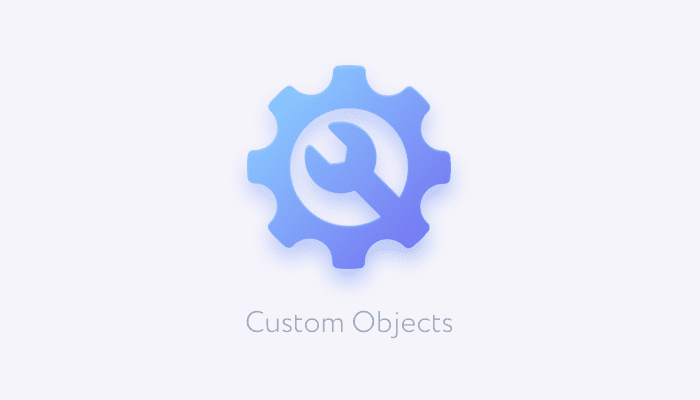
In a SaaS application, the database usually provides a number of standard objects to manage customers. Typically, standard objects store very basic data, such as contact or account details. However, in a real-life situation, standard objects may be insufficient to provide the necessary functionality.
For such cases, SaaS providers support custom objects that contain any number of standard and custom fields to store the information that does not fit into the standard objects.
What are custom objects?
Custom objects are built according to the same structure as standard ones. However, when creating custom objects, you can add fields that are needed for your purposes, fill them with values to create records and build relations between such records and standard accounts or contacts in your database.
For example, in a healthcare institution database, a standard object is typically the patient with their contact data. However, it is often required to store contact person information for the patient. To keep hospital records clean and easily maintainable, the best way is to store contact person details outside the patient’s contact object and create a link between them.
This is where a custom object can be used. It allows storing the contact person information separately from the patient’s information with a connection between them. This way, the contact records of the patient and their contact person are associated.
How custom objects work
If you have chosen a SaaS provider that supports custom objects, you have the freedom to create, modify and populate them as you see fit. While creating a custom object, you can add both default and custom fields building schemas that allow you to achieve your goal, set the allowed value types, connect schemas in a one-to-many relationship. In addition, you can manage permissions allowing various custom object operations.
If we use the example above, to set up a custom object for a hospital patient’s contact person, you need to create such an object and call it “Emergency contact”. Then set up the custom object schema by selecting the set of fields to add to this object – you can use the default fields, like “Name” or “Telephone number” and then create a custom field “Relation”.
When all the fields are created, populate them with values. Now the custom object record that you created will be available in the database and accessible to anyone with the corresponding permissions. The look and feel of custom objects are identical to that of standard ones, so your database will produce smooth and uniform user experiences.
For more details on creating custom objects, see the QuickBlox Platform documentation, where you can find guidance both for desktop apps and mobile platforms.
When the custom object is populated with records, such records can be updated and managed centrally with all clients having access to the same data simultaneously. Custom objects are an optimal solution for cases when custom data needs to be updated and distributed quickly.
Use cases of custom objects in chat applications
When used in a chat app, custom objects allow creating and updating shared content that can be accessed by multiple users at the same time:
- In a text or video chat application, custom objects can be used to build questionnaires for all participants of a specific chat. The questionnaire is built as a custom object with fields to be populated with the users’ answers that are stored as individual custom object records.
- Custom objects can be the way to share updated or modified information between chat participants at the same time.
- Chat separation into internal and external conversations can be achieved with custom objects, too. By creating a custom object “Employee details”, you can immediately differentiate internal and external chat requests directing them to the corresponding users.
Custom objects in QuickBlox applications
QuickBlox’s solution for building communication apps supports the creation of custom objects for use in chat and calling products. With QuickBlox, you are getting multiple custom object management options, such as the ability to create, update, and delete custom objects as well as read data from them.
QuickBlox supports custom objects in multiple platforms – web, desktop, Android, iOS, and Flutter. This way, you can build your chat app for several operating systems and devices while maintaining consistent functionality and similar user flows.
Custom objects created using the QuickBlox solution support a vast selection of data types, which ensures high freedom and flexibility in setting up custom fields that may be required in a particular use case. You can also import custom object records, if necessary.
And, last but not the least, the custom object feature implemented in chat APIs and SDKs by QuickBlox can be integrated into your app easily and quickly. The entire developer toolkit offered by QuickBlox is designed for smooth and straightforward implementation that will allow you to enjoy the advanced chat functionality within the shortest time possible.
For more details on implementing custom objects using QuickBlox APIs and SDKs, see the official documentation. And, of course, do not hesitate to contact us if you have any questions or would like to evaluate the QuickBlox solution for your business.






